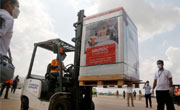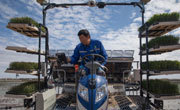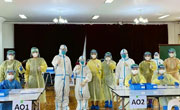How to guide graduate students of liberal arts to get started on “research”
Since the first day in school, graduate students all hope to develop their abilities with their supervisors’ help.
As its name implies, "research" is the essential trait of graduate students (in Chinese, the words for “graduate students” can also be translated as “research student”). "Research" and "writing" are the main tasks for graduate students of liberal arts. This is easy to say, but difficult to do. Arranging academic literature for masters and Ph. D. students to read is the starting point. After a period of time, we can see the problems in students’ “research” through their reading reports. In all subsequent stages, such as concept analysis, focus on a question, material evacuation, value enhancement, and text construction, the different “research” questions that arise are hard to eliminate. Supervisors are troubled by the fact that they can find the questions but cannot solve them. Students are frustrated because they know the questions but cannot find solutions. While the nature of the questions are different, the commonalities are clear.
The condition of type A students is that, after reading the academic literature, they can find the innovation point of the article and generate some thinking, but their thinking cannot focus on one point. The report they hand in are often unrestrained, describing a bunch of questions but cannot decide which one to focus on. Nor can they evaluate which question is more important, or formulate a primary and secondary relationship between their questions. In other words, they cannot concentrate on a core question. This condition can be classified as the mistake of "parallel questions".
The scenario of type B students is the papers they hand in are often repeating the literature, similar to abstracts or translations. Even though they can find some viewpoints in the literature, they cannot identify the academic thinking behind the literature. They fail to find questions, and remains at the stage of summarizing the knowledge background, but cannot enter research. This scenario should be classified as the mistake of "distant scanning."
The situation of type C students is their literature reading can only reach the literal meaning. They fail to see the literature’s innovation point, and cannot correlate the literature to their own research or writing. The reading reports they hand in are often unintelligible, the "essays" they write cannot be categorized into academic research. This is the mistake of "academic barrier".
The problems the three types of students encounter are not simply a matter of difference in results, but of difference in the process of development. It is easier to solve the problems of type A students, but much more difficult to solve the problems of students in types B and C. In general, the three types of students have a common problem in research, which is they cannot find a research question. Faced with these common problems, supervisors can provide a unified explanation, then conduct specific analysis of students’ papers.
Then, what should supervisors teach? The first and most essential question is how to concentrate. Specific to the papers handed in by students, discuss which question in the “parallel questions” can make the most academic contribution, and how solving this question can be most valuable to knowledge innovation. In addition, what are the reasons? Supervisors need to give reasons that can convince students.
Secondly, supervisors need to talk about classic academic literature, to help students find the train of thought and innovative thinking behind the literature, let students see the academic essence behind the words. Simply speaking, this is a question about reading. The goal of reading is to extract connotations that are related to our research, solve the problem of “distant scanning” that produces abstracts and translations. Thirdly, supervisors need to talk about the highlights of the literature. From the “Abstract”, to “Introduction”, to “Conclusion”, to locate the innovative highlights of the paper, let students walk into the paper and into academia, to solve the problem of “academic barrier”.
Above, we only discussed problems during the first stage of guiding graduate students. Afterwards, there are stages of social investigation, data analysis, concentration of thinking, structure integration, and innovative orientation. Problems will always occur, and solving problems is a process, so is cultivating one’s abilities. Solving the problems during the first stage determines whether graduate students can enter academia and start academic research. Otherwise, the latter stages will all be empty thinking. For supervisors, doing research is learning, thinking of how to guide students to do research is also learning, and a more important aspect of learning.
Author: Lu Deping, Professor and doctoral supervisor at the Department of Linguistics at Beijing Language and Culture University
[ Editor: JYZ ]










More From Guangming Online
Medics from Fujian leave for Shanghai to aid in battle against COVID-19 resurgence
New int'l land-sea transport service to Indo-China Peninsula launched
Another makeshift hospital under construction in Shanghai
Tourists view tulips in Suiping County, Henan
In pics: blooming gagea flowers on grassland in Zhaosu, Xinjiang
Greek workers stage 24-hour general strike over high prices